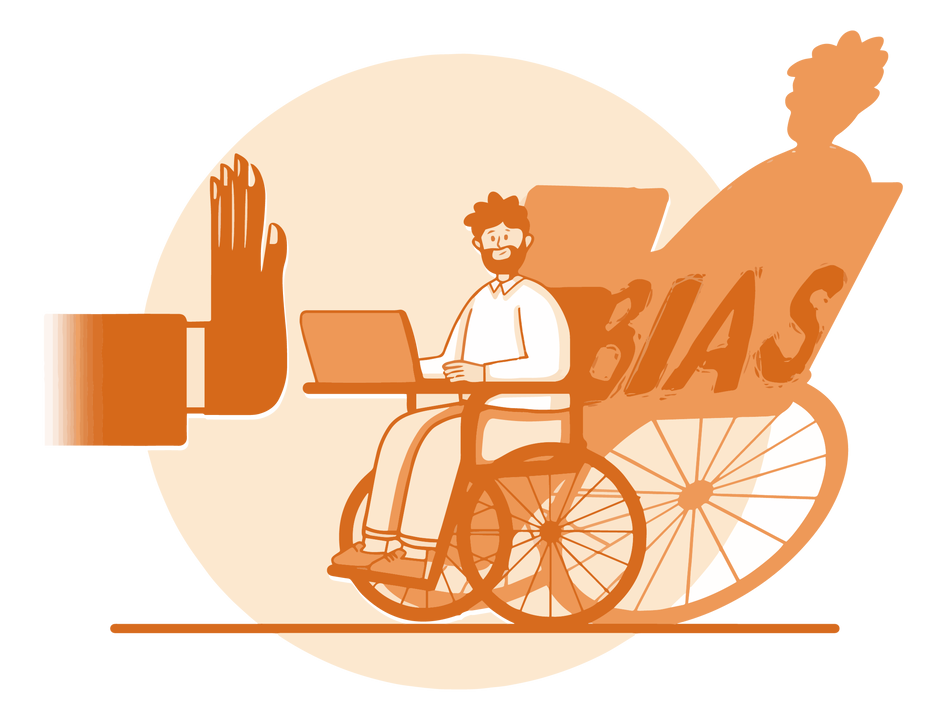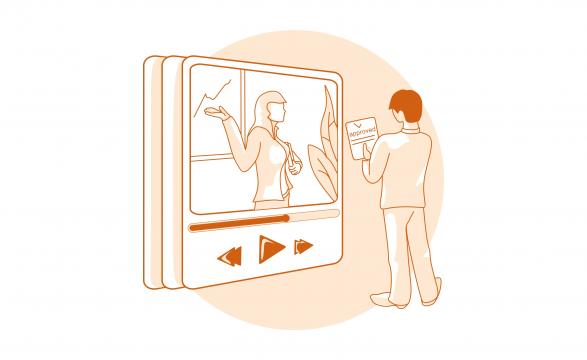
Reducing hiring bias in the hiring process is essential for organizations
committed to fostering diversity, inclusivity, and fairness.
By acknowledging the importance of mitigating bias and adopting effective strategies, organizations can tap into the immense benefits of a diverse workforce, foster innovation, and contribute to a more equitable society.
This article aims to provide guidance and insights into the various ways to reduce bias in hiring, empowering organizations to create workplace environments where everyone has an equal opportunity to thrive.
What's Unconscious Bias in Hiring?
Unconscious bias in hiring refers to attitudes or stereotypes that can influence a hiring decision, often unintentionally and outside of conscious awareness.
These biases occur when a hiring manager makes assumptions about a qualified candidate based on irrelevant personal characteristics, such as gender equality, sexual orientation, gender identity, etc.
They can prevent qualified candidates from being hired, leading to a lack of diversity and leaving great candidates without the opportunity they deserve.
- Halo Effect👋🏼: The halo effect happens when positive qualities or impressions of a candidate in one area influence the overall assessment of their abilities. For instance, if a candidate graduates from a prestigious university, the hiring manager may assume they possess exceptional skills across all areas, even without evaluating them thoroughly.
- Prejudice🤨: Unconscious bias is rooted in prejudice towards individuals based on factors unrelated to their ability to perform in a given role (bias favoring women or male kindergarten teachers).
- Beauty Bias💁♀️: Beauty bias is the tendency to favor physically attractive candidates or possess specific attributes. Research suggests that attractive candidates may be perceived as more competent, even when appearance is irrelevant to the job requirements.
- Invisibility🫥: Because these biases may happen automatically and outside of one’s conscious awareness, individuals may not realize they are making decisions based on their unconscious biases.
- Elusiveness☝🏼: Unconscious bias can be challenging to identify and measure, often requiring individuals and organizations to self-reflect and continuously learn to recognize these biases.
- Name Bias🗣️: Name bias occurs when a candidate’s name influences the perception and evaluation of their qualifications. Candidates with names that are perceived as more traditional or from dominant cultures may be favored over those with names that are unfamiliar or associated with minority or marginalized groups.
There are a few examples of unconscious bias in hiring:
Affinity bias
Hiring managers may unconsciously be drawn to job candidates who share similarities like a similar background or education. That can lead to hiring homogenous teams, reducing diversity in the workplace.
Confirmation bias
When a hiring manager seeks information confirming existing beliefs about a job candidate, that can lead to disregarding qualities and experiences that challenge these biases.
Stereotyping
Unconscious bias can also lead to using stereotypes about ranked candidates, often based on their race, particular gender, or age (some naturally associate women, and some naturally associate men).
For example, a hiring manager may assume that an older candidate is not tech-savvy or that a woman needs to be more assertive to lead the entire team. The same situation is with female engineers and male applicants for more “feminine” job positions.
Top 7 Ways to Reducing Bias in the Hiring Process
Reducing bias in the hiring process is essential for ensuring a more diverse and inclusive workplace and selecting suitable candidates who can perform their roles effectively.
These top 7 ways to remove bias in hiring can help companies create a fair and unbiased recruitment process that attracts a broader pool of decent candidates.
Educate
Educating hiring managers and recruiters about implicit bias and its effects on hiring decisions is crucial in decreasing it.
Knowledge is power, so unconscious bias training and awareness training to recognize and overcome their biases is critical in building a more equitable hiring process.
Everyone is Accountable
Accountability is key. It’s essential to develop a culture where everyone, from job-seekers to internal HR departments, takes responsibility for identifying and challenging biases, and everyone is on board with an inclusive application process.
Job Descriptions are Written Accurately
Job descriptions and titles should be written accurately with subtle word choices to encourage a broader applicant pool.
Using neutral language and avoiding gendered pronouns would make the job ad or job posting more inclusive and less likely to put off top-talent candidates. Don’t forget to revise job descriptions in case of need.

Data-driven decisions
Collecting and analyzing data on hiring practices and forming data-driven decisions can help enterprises understand where to improve their hiring processes.
Using online platforms for a recruitment process might help anonymize job-hunting candidates so that decisions are made based on their abilities rather than their biases.
Inclusion during meetings
Meetings should be designed to be inclusive. Involving diverse stakeholders on the hiring panel and inviting their contributions can give diverse candidates a sense of belonging.
Hiring managers can reduce unconscious bias by actively listening to their colleagues, providing candidate feedback, and engaging the panel in hiring.
Avoid gendered vocabulary
Using gender-neutral vocabulary in every job description, ad, and interview stage can help attract a more diverse talent pool.
Using gender-neutral job titles such as “Data Analyst” instead of “Data Analyst - Male or Female” can make job ads on online resources more appealing to all candidates without any underrepresented groups.
Have a Panel as part of the Hiring Process
Having an interview panel as part of the hiring process can prevent one person from single-handedly making a hiring decision.
Group assessments are less likely to have biases, and candidates’ strengths and weaknesses are more accurately evaluated.
Eliminate Unconscious Bias with Playhunt's Hiring Tech
Playhunt’s hiring tech is an online platform for interviewing candidates using structured interviews in video format. The platform provides a simple and friendly interface, allowing for interviews without the involvement of HR, recruiters, or technicians.
The fully automated interview process aims to help companies recruit the best talent x7 times faster by leveraging the benefits of video interviews and removing unconscious bias.
- The platform allows hiring managers to create a video survey with a list of questions. Using standardized same questions for all candidates helps ensure a fair and structured interview process, minimizing the potential for bias based on the variation of questions asked.
- Playhunt enables candidates to record their responses to the survey questions at their convenience using a laptop or smartphone camera. This anonymized approach helps reduce bias by focusing on the candidate’s qualifications and responses rather than personal characteristics.
- Hiring managers can listen to the candidates’ answers, take notes, and share them with colleagues and employees at their convenience. It enables a possibility to remove unconscious bias and get a more objective evaluation process, as multiple stakeholders can assess the candidate’s responses independently, eliminating individual implicit biases.
- Video interviews through Playhunt allow hiring managers to see candidates’ body language and evaluate non-verbal cues. That can provide valuable insights into the candidate’s communication skills and alignment with the company values based on their demeanor.
When using Playhunt, the hiring team can avoid unconscious bias and involve a diverse panel of evaluators in the interview process. Including different perspectives and backgrounds in the evaluation helps eliminate bias by providing a more inclusive and well-rounded assessment.
The platform allows taking notes, adding likes/dislikes, and sharing candidate responses. This data can be collected and analyzed to make more objective and data-driven hiring decisions, reducing the influence of implicit bias.
Playhunt allows companies to reduce hiring bias and customize the passing interview questions with branding and style, and you're welcome to try it!






